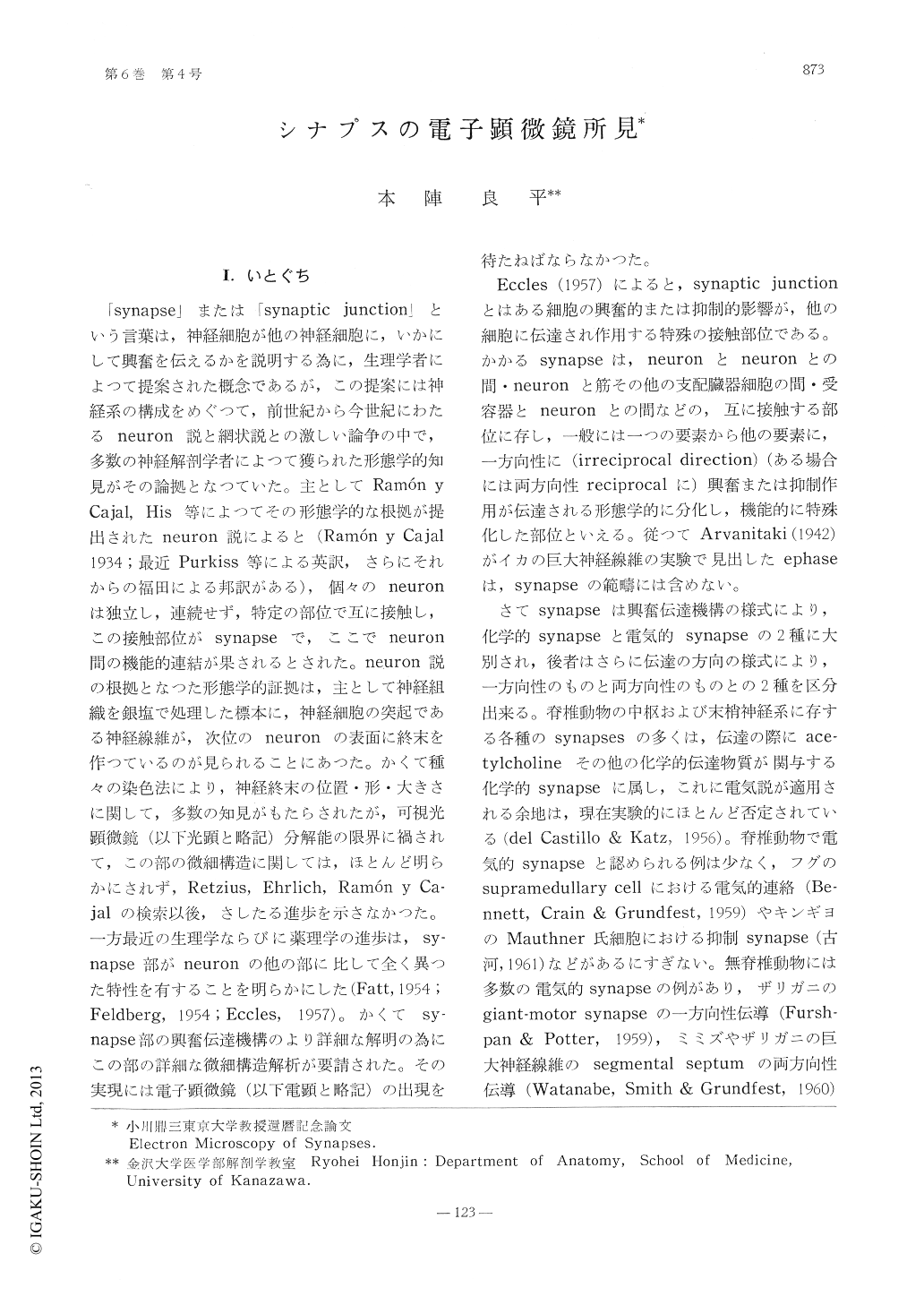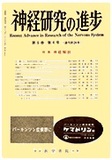Japanese
English
- 有料閲覧
- Abstract 文献概要
- 1ページ目 Look Inside
I.いとぐち
「synapse」または「synaptic junction」という言葉は,神経細胞が他の神経細胞に,いかにして興奮を伝えるかを説明する為に,生理学者によつて提案された概念であるが,この提案には神経系の構成をめぐつて,前世紀から今世紀にわたるneuron説と網状説との激しい論争の中で,多数の神経解剖学者によつて獲られた形態学的知見がその論拠となつていた。主としてRamón y Cajal,His等によつてその形態学的な根拠が提出されたneuron説によると(Ramón y Cajal1934;最近Purkiss等による英訳,さらにそれからの福田による邦訳がある),個々のneuronは独立し,連続せず,特定の部位で互に接触し,この接触部位がsynapseで,ここでneuron間の機能的連結が果されるとされた。neuron説の根拠となつた形態学的証拠は,主として神経組織を銀塩で処理した標本に,神経細胞の突起である神経線維が,次位のneuronの表面に終末を作つているのが見られることにあつた。かくて種々の染色法により,神経終末の位置・形・大きさに関して,多数の知見がもたらされたが,可視光顕微鏡(以下光顕と略記)分解能の限界に禍されて,この部の微細構造に関しては,ほとんど明らかにされず,Retzius,Ehrlich,Ramón y Cajalの検索以後,さしたる進歩を示さなかつた。
The electron microscopic survey of synaptic regions in several parts of many animals has indicated that the synapses show a morphological differentiation and have specific submicroscopic organization, though their ultrastructures differ with one another in details of morphology, distribution and geometry. The basic similarities in organization of the synaptic regions are as follows : (1) At the level of the synaptic junction, there is a direct contact of membrane surfaces of the two pre- and postsynaptic components, without direct continuation between the two components. This confirms and extends to a submicroscopic level the concept of the individuality of the nerve element which is implicit in the neuron doctorine. (2) The preand postsynaptic surface membranes are separated by an intervening thin space, synaptic cleft of 100 to 500 A in wide. without interposed cellular material alien to the two pre- and postsynaptic components. This indicates that the concept of 'gliotheca' suggested by early worker is an artificial image. (3) A special vesicular component termed 'synaptic vesicles' is present in the presynaptic region. The synaptic vesicles are spherical or oval in shape with a dense limiting membrane 40 to 50 A thick and vary between 200 to 659 A in diameter. They accumulate at the dense spots of the presynaptic membrane to show a close association with the synaptic membrane. They are confined almost exciusiyely to the proximal side of the synaptic junction. This indicates they are the only elements which may confer to the synaptic region the necessary asymmetry for a polarized function.
The postsynaptic membrane shows special differentiation. For instance, the postsynaptic membrane of the bipolar cell in the retina invaginates into the presynaptic ending of the rod cell, while that in the neuromuscular junction shows many folds which provide a special subneural apparatus of Couteaux.
The synaptic vesicles show submicroscopic changes in size and number following nerve section or physiological and electric stimulation of the nerve. It is speculated that the synaptic vesicles may flow toward the presynaptic membrane and discharge their content into the synaptic cleft. Acetylcholine or other chemical synaptic mediators may be associated with the synaptic vesicles. The consideration based on both the submicroscopic structures of the synapse in normal and experimental conditions and the physiological finding of the miniature endplate potential indicates that the synaptic vesicles may represent the quantal unit of acetylcholine or other chemical transmitter substances.

Copyright © 1962, Igaku-Shoin Ltd. All rights reserved.


